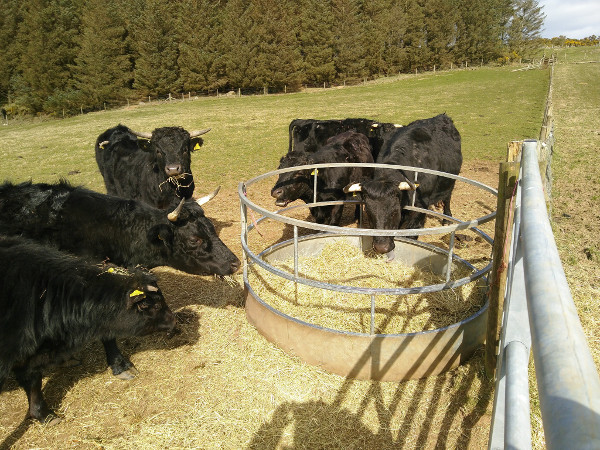By: Simon Brooke :: 26 August 2020
This piece is written in response to a video by Gareth Wyn Jones.

I'm not so unlike you, Gareth. I keep kye on this windy hilltop in Scotland. The alchemy of the grasses and the kye turns sunlight and rain into high quality protein. But is it efficient? And is it the best use of the land?
There's a number of parts of that question, and the key is what it is we're trying to optimise. I'm trying to produce food; but I'm also trying to maintain a herb-rich wild pasture which supports a rich ecosystem of flowering plants and wildlife, from foxes, rabbits, buzzards, kites, down to butterflies and bees. As agriculture turns to monoculture, we lose this richness. And without grazing, my parks would, over fifteen years or so, turn to scrub, and then to forest — because virtually all of Britain is naturally forest.
So should I let it turn back to forest? These organic meadows do hain carbon, but they don't hain as much carbon as forest would — even if that forest were poor quality timber. If it goes back to forest, it will produce much less food — it's not warm enough here to grow chestnuts, although, within the lifetime of a chestnut tree, it might become so.
If storing carbon is the thing we want to maximise, forest would be better.
But let's go back to food. Most beef, worldwide, is fed, not on grass, but on grains and pulses. The feed is grown in monocultures, using methods of farming which deplete the topsoil, reduce soil fertility, and leach carbon into the air. Is my method of farming — and yours — better for carbon than that? Yes, it is. But also, those grains and pulses could be food for people, and would feed far more people as grains and pulses than the beef that can be produced from them. So feedlot beef is not only inefficient in carbon, it's also inefficient in food.
What about us? You say your land won't grow pulses. Well, maybe; but in medieval Britain, almost everyone ate field peas — what we'd call 'dried peas' these days — and they were grown almost everywhere. I could certainly grow field peas. If I grew field peas organically, it would probably be no worse in carbon terms than what I do now, and it would produce more protein.
But it would be a monoculture. It would cost biodiversity, and in particular, it would decrease the food supply for pollinators, because peas self-pollinate. And because it would be a monoculture, it would attract pest species which I'd then have to control for.
So there's a balance in all things, and what to do for the best is always difficult and arguable. There's a balance between carbon and food and biodiversity. The way I farm (and the way I suspect you do) is good for biodiversity, not bad for carbon, and not bad for food.
And, as you know, the food we produce is really good food.
By contrast, 'impossible' meat substitutes are made from 'common crops: wheat, corn, soy, coconut and potatoes', flavoured with an extract from a genetically modified yeast. Those 'common crops' are almost certainly grown in monocultures, so while 'impossible' food may be efficient in terms of calories of food per hectare of arable, it isn't efficient in terms of carbon and it isn't efficient in terms of biodiversity.
Is what we do better, or worse, than that? It depends what you want to get out of it.
« Saving the union? Maybe naw | | Rape, grouse, and the pathology of power »




